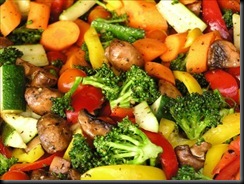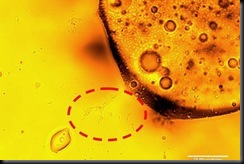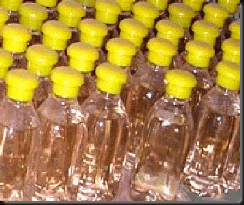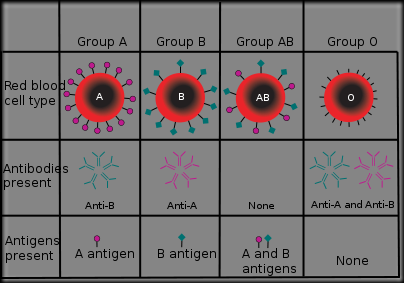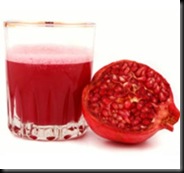When it comes to beauty routines, the grass is always greener. Japanese women have it made with their long, glossy hair and Greek women’s olive-toned complexions are always luminous. But how do they do it? Put down your passport—you won’t need to go anywhere to find out. We got insider beauty information from experts on how women across the globe stay gorgeous. Read on to find out their secrets, and learn how you can recreate them at home.
Australia

Australian makeup artist Napoleon Perdis says yarrow extract is used by Australian Aboriginal women to prevent stretch marks, thanks to its moisturizing and hydrating properties. “Yarrow root is also an anti-inflammatory, which soothes the skin.” Calm your complexion with his Auto Pilot Pre-Foundation Primer , which contains the extract as a key ingredient.
Chile

Chilean women credit the antioxidant powers of red grapes for their luminous skin. They create a paste by mashing up a handful of the fruit and adding 2 tablespoons of white flour. They then apply the mask to their face and leave it on for 10 minutes before washing it off. “It wakes up the appearance of tired and fatigued skin to give you an amazing glow,” says Shalini Vadhera, author of Passport to Beauty
Dominican Republic

“If you ever meet a Dominican woman, look at her nails––chances are they’re super-strong,” says Vadhera. What’s their secret? Women in the Dominican Republic swear by garlic to keep their nails tough as…well, nails. They chop up fresh garlic, add it to a bottle of clear nail polish and let it stew for 7 to 10 days. “There will be an initial smell, so if you want to ward off vampires this is a great way to do it,” jokes Vadhera. “But the scent goes away. Garlic has so many strengthening properties and is naturally antibacterial as well.”
Egypt
According to Vadhera, Cleopatra’s beauty secret was taking milk baths to soften her skin and remove dead cells. To try the treatment at home, Vadhera recommends adding 2 cups of powdered milk to your bath. “It will make your skin look absolutely gorgeous and feel so smooth, silky and soft.”
France

“The French woman sticks to a scrupulous and preventive skin and body care routine,” says Shannon Gallogly, lead aesthetician for French beauty brands Decleor and Carita. “This means she has weekly facials, regular massages and religiously takes her makeup off each night.” Gallogly’s recipe for an at-home facial without the price tag of a spa version: Mash up cherries and pomegranate seeds and apply as a mask to the skin for about 6 minutes. “This mask will help brighten skin with natural enzymes while firming at the same time.” Remove the mixture with a warm towel to help boost circulation.
Greece

“Greek women are blessed with Mediterranean skin, which is light in color but has enough melanin to shield and absorb harmful UV rays,” says New York City dermatologist Macrene Alexiades, MD, PhD, who is half Greek. But even if you aren’t genetically blessed, you can still take a cue from the women of Greece. “There are other factors that contribute to their glowing complexion: They eat a Mediterranean diet high in fish, which provides skin-rejuvenating omega-3 and omega-6 fatty acids, as well as fruits and vegetables, which provide antioxidants and vitamins. They also believe their intake of olive oil contributes to their great skin." So, start reaching for the olive oil instead of butter for better skin.
Israel

Cygalle Dias, owner of New York City’s Cygalle Healing Spa, was born in Israel and believes in the healing powers of sea salt. “When you swim in the Dead Sea, all of the salt helps your body rid itself of toxins, and it has also been known to help cure skin diseases.” To get the detoxifying benefits of sea salt at home, Dias shares her spa’s Lavender Sea Salt Scrub recipe: Mix together ¼ cup sea salt, 1 pinch seaweed powder, ½ cup massage oil and 10 to 15 drops lavender oil. Apply to skin to gently exfoliate.
Italy
How do Italian women maintain their glossy locks? According to Fabio Scalia, Italian hairstylist and owner of Fabio Scalia salon in Brooklyn, New York, the answer is right in your kitchen. Italian women keep their hair shiny by combining yogurt and olive oil and using the mixture as a conditioner. “The protein in the yogurt gently nourishes and conditions.” To whip up the rich treatment at home, Scalia recommends mixing 1 cup of plain whole-milk yogurt with 1 teaspoon olive oil. Then apply the mixture to washed hair, let it sit for 5 minutes and rinse with cool water.
Japan

Titi Branch, the half-Japanese cofounder of Miss Jessie’s hair care line, credits seaweed for Japanese women’s long, silky hair. Nori is a rich source of the trace mineral iodine, which is essential for healthy hair growth. (According to Branch, the iodine added to table salt isn’t the right kind to nourish your hair because your body doesn’t easily absorb it.) Seaweed is also a rich source of other mane-strengthening minerals—including iron, zinc, selenium and copper. “Japanese women either eat nori seaweed or boil it and apply it to dry hair as a nourishing paste.” Head to your local Asian grocer or health food store to pick up sheets of nori. “It’s traditionally used to wrap sushi, but you can use it like a tortilla to wrap up veggies with a dash of soy sauce, or crumble the sheets and sprinkle them on a salad, rice or stir-fry,” advises Branch.
Spain

Spanish women bring out natural, subtle highlights in their hair by rinsing it with cranberry juice, says Vadhera. Try mixing ¼ cup pure juice (not cocktail blends) with ¼ cup water and doing a final rinse with it in the shower. “If you’re going to be in the sun, the cranberry juice brings out the rich hues in your hair,” she says. “It works amazingly on brunettes, but if you’re blonde you’ll want to use lemon juice instead to avoid ending up with pink hair.”
Sweden

Swedish women attribute their glowing, healthy skin to their diet of antioxidant-packed fresh berries and grilled fish, says Petra Strand, Swedish makeup artist and creator of makeup line Pixi, now available at Target. Give yourself a hit of antioxidants by trying Strand’s at-home treatment: Boil mineral water with a green tea or white tea bag, let the tea infuse the water and then freeze it into ice cubes to use instead of a toner. “Saunas are also a big part of Swedish culture,” says Strand. “The dry, clean heat rids your body of toxins.” To get the effect of a sauna at home, Strand says to take a handful of rock salt and add a dash of olive oil and about 10 drops of pure eucalyptus oil. Rub it all over your body and rinse with a blast of cold water.
Source: Yahoo
